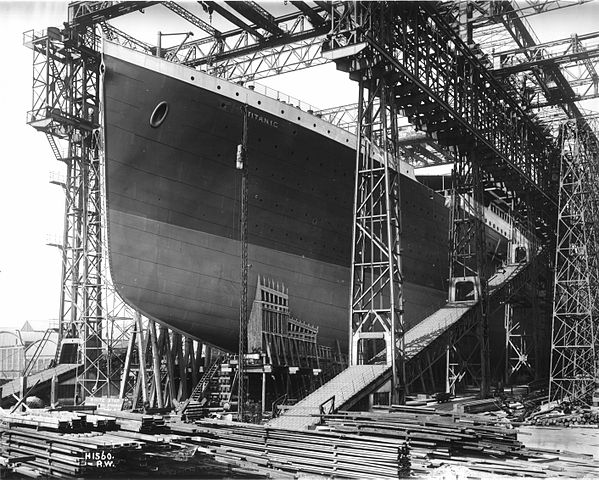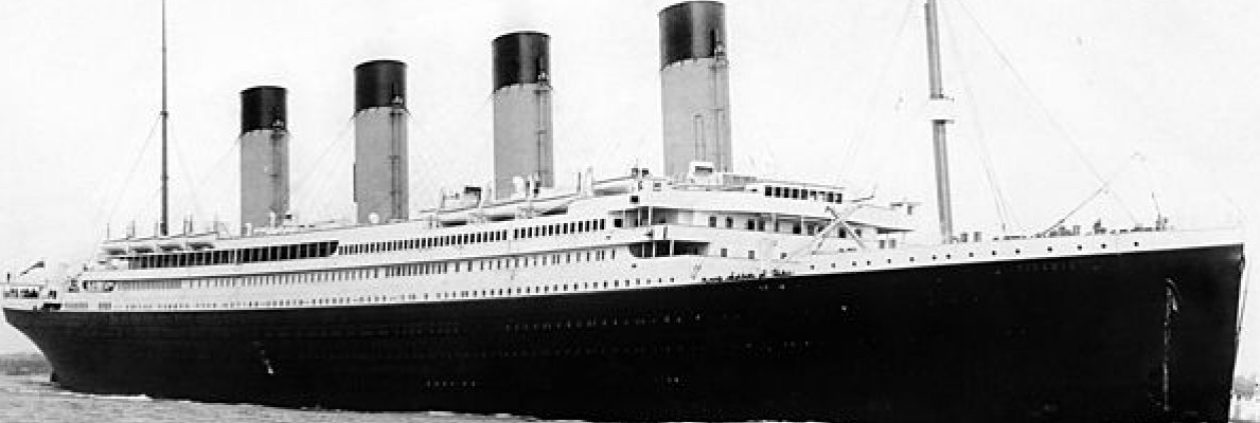
Public Domain (U.S. Library of Congress, digital id#cph.3a27541)
Due to the immense size in constructing the Olympic class vessels for White Star Line, Harland & Wolff had to demolish three existing slipways on Queen’s Island in Belfast Harbor. The two new ones, the largest ever built at that time, would be where both Olympic and Titanic would be constructed. The keel for Olympic was laid on 16 December 1908 and Titanic on 31 March 1909. Both ships would be constructed parallel to each other. Queen’s Island became known as Titanic Quarter and an enormous gantry was built to hold the cranes needed during construction. Expedited completion for each ship was 26 months. The base of both ships had a double bottom of 5 feet 3 inches deep supporting 300 frames (each were 24 and 36 inches apart and measured up to 66 feet) which terminated at the bridge deck (B deck). These were covered with steel plates which provided the outer skin of both ships. Both ships were floating box girders with the keel as the backbone of the ship.
Sources:
Books
Purchase Titanic Books on Amazon.
Behe, George TITANIC: SAFETY, SPEED AND SACRIFICE, Transportation Trails, Polo, IL 1997
Eaton John P. & Haas Charles, TITANIC TRIUMPH AND TRAGEDY, SECOND EDITION, W.W. Norton & Company, New York, New York, 1995 First American Edition
Lord, Walter, A NIGHT TO REMEMBER, Holt Rinehart and Winston, New York, New York, 1955. Multiple revisions and reprints, notably Illustrated editions (1976,1977,1978 etc)
Lord, Walter, THE NIGHT LIVES ON, Willian Morrow and Company, New York, New York, 1986 (First Edition)
Lynch, Don & Marshall Ken, TITANIC AN ILLUSTRATED HISTORY, Madison Press Books, Toronto, Ontario Canada, 1992
Internet











